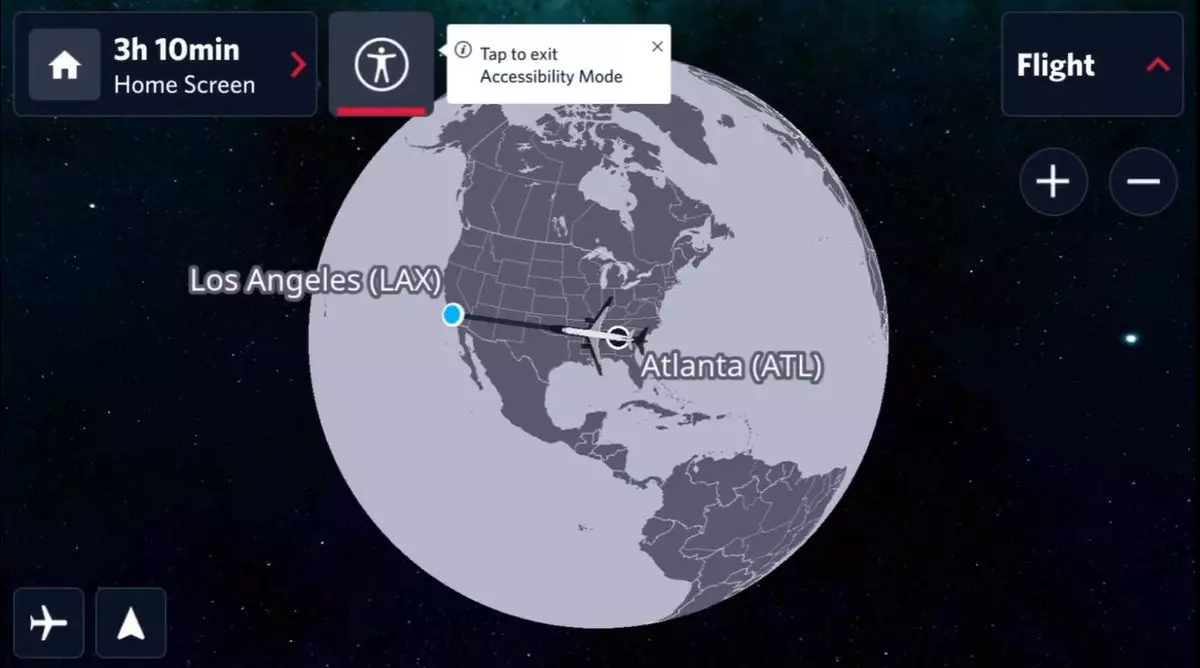In a remarkable initiative aimed at enhancing accessibility for passengers with visual impairments, Delta Air Lines has launched a specialized flight map application. This innovative feature, now available on 171 of its aircraft, is set to expand to over 600 planes by the holiday season, according to Ekrem Dimbiloglu, the airline’s managing director of customer experience. This move not only exemplifies Delta’s commitment to inclusivity but also highlights a growing trend within the airline industry to address the needs of all travelers.
Pioneering Initiatives in Aviation
The introduction of this accessible flight map coincides with other significant advancements in airline accessibility, such as United Airlines’ recent Braille signage implementation and the development of wheelchair-user-friendly seat designs by Delta in conjunction with Collins Aerospace. These initiatives reflect a broader awareness within the aviation sector regarding the importance of catering to passengers with different kinds of disabilities. With almost 50% of Delta’s customers utilizing flight maps during their journeys, and 20% relying solely on the seatback screen for engagement, the significance of this feature cannot be overstated. Dimbiloglu articulated this sentiment clearly, emphasizing that the goal is to ensure “accessibility for everyone who flies with us.”
Passengers who require accessible features can easily transition to the new flight map via a simple tap on their seatback screen. The redesigned map presents a more straightforward interface, showcasing fewer cities and geographical elements to minimize complexity. Moreover, it utilizes a high-contrast color scheme with larger fonts and icons, facilitating easier visibility for users. There are even plans to integrate a voice narration option, expected to debut next year, which will further enhance the experience for visually impaired passengers.
The development of this inclusive tool has been notably swift for a major airline, taking just 13 months from research to rollout. This agility is commendable in an industry often criticized for lagging in innovation and response to customer needs. Collaborating with FlightPath3D, the map’s developer, Delta sought feedback from its 20-person Advisory Board on Disability, ensuring the final product reflects the needs of users.
Both Delta executives and representatives from FlightPath3D have expressed a desire to see similar accessibility features adopted across the airline industry. Dimbiloglu asserted that expanding such initiatives is about more than just financial implications; it’s a matter of doing what is right. Duncan Jackson, president of FlightPath3D, emphasized that with approximately 400 million people using their standard flight map service yearly, making the accessible version widely available is crucial.
Ultimately, Delta’s implementation of this accessible flight map stands as a beacon of hope and progress for the airline industry. With these enhancements, the airline not only takes a significant step toward ensuring that all passengers can enjoy a seamless travel experience but also ignites a pivotal conversation about the necessity for widespread accessibility innovation in air travel. As airlines continue to adapt their services, the imperative for compassionate, user-driven solutions has never been clearer.

